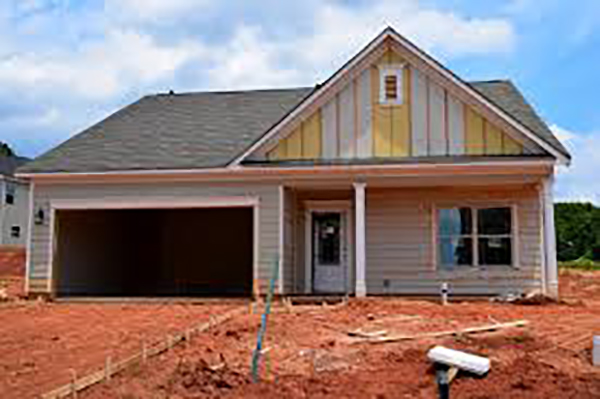In a sign of things to come – and a sign of how things have been in the last decade – the Guilford County Board of Commissioners, on Thursday, Aug. 7, overturned a previous denial by the county’s Planning Board and gave the green light to a rezoning that will allow more homes to be built just south of NC Highway 150.
The nine-member Board of Commissioners voted to approve a request to rezone roughly 21 acres of land near the Triple Lakes subdivision from Agricultural (AG) to Conditional Zoning RS-40.
That’s a residential category that will permit more homes on the site than the previous designation. The move came despite concerns raised by nearby residents –and despite the fact that the Planning Board had voted to deny the same rezoning request back in April.
At the meeting, several residents spoke against the rezoning for all the usual reasons: safety concerns, a loss of peace and quiet, environmental concerns and a potential decline in their property values.
The commissioners’ Thursday night decision is part of a growing trend in the area: Local officials at the city, county and state levels are increasingly taking steps to meet what they say is a critical housing shortage. And with major employers like Boom Supersonic, JetZero and Toyota bringing thousands of new jobs and new people to Guilford County, local governments have clearly been signaling that they’re willing to make room for new housing – especially in rural parts of the county that used to be largely off-limits for higher-density development.
The project in question involves a 37-acre property at 5475 Yanceyville Road. The developer asked to rezone just over half the land – specifically, the western portion bordering the existing Triple Lakes neighborhood – so that a higher number of homes could be built.
The remaining eastern section would remain zoned Agricultural.
Guilford County Planning staff had recommended approval of the rezoning earlier this year; however, the Planning Board shot it down on a 3 to 4 vote. As allowed under the county’s Unified Development Ordinance, the developer appealed that denial to the Board of Commissioners, which had the final say Thursday night.
Some residents of the Triple Lakes area came to the Aug. 7 hearing to voice opposition, arguing that the project would increase traffic, endanger children and limit EMS access. Others pointed out that the development would be accessed through a single entrance on Burton Farm Road – raising concerns about congestion, especially during construction.
Perhaps the most common argument was one that always gets repeated in rezoning debates throughout the county. It’s essentially this: Look, we moved to the rural part of Guilford County for peace and quiet – and now that’s going away, one rezoning at a time.
Concerns were also raised about construction traffic, road conditions and the environmental impact of the work – particularly since a stream runs through the site and separates the proposed development area from the remaining acreage.
Still, the rezoning sailed through with support from the commissioners, who adopted the necessary findings and officially approved the change. Although the approved RS-40 zoning still requires a minimum lot size of 40,000 square feet, it opens the door for a more concentrated residential subdivision than would have been allowed under the Agricultural classification.
Several commissioners spoke after the decision and were very sympathetic to the residents. Some said that the new houses on the land may turn out to be better for the neighborhood than some things that would have been allowed under an Agricultural designation.
The change was made through conditional zoning – a tool that allows for specific limitations to be attached to a rezoning approval. In this case, the conditions included banning, among other things, cemeteries and debris landfills from the property, but allowed all RS-40 residential uses.
County staff emphasized that the rezoning is consistent with the Northern Lakes Area Plan, which designates the area for rural residential development with a density of up to two homes per acre.
That means the rezoning didn’t require a land-use plan amendment in order to go forward.
Across Guilford County, these types of rezonings are becoming more common. Greensboro. city and county officials alike have stressed the urgent need for more housing – both affordable and market-rate. According to local housing reports, Guilford County has a shortfall of thousands of units, and demand is only expected to rise with the influx of new employers and the continued migration of people to the Piedmont Triad region.
The City of Greensboro has already committed to a sweeping housing initiative that aims to create thousands of new housing units by 2030, and the city has been using public-private partnerships and funding tools to help meet that goal.
Meanwhile, the State of North Carolina has also taken a more aggressive stance. In one highly publicized move last year, the legislature allowed property owner David Couch in Summerfield to be de-annexed from the town so that denser housing could be built under county rather than town rules.
That decision was widely seen as a signal that the state may be willing to override local barriers to housing development if needed.
Put simply, the forces pushing for more housing appear to be gaining momentum – and fast. While rural residents may not like seeing fields and woods converted to homes and roads, the direction of policy from Raleigh to Greensboro to the county seat is clear: Growth is coming, and rooftops are coming with it.
If there was any doubt, the commissioners’ vote on August 7 made it plain. One by one, those old rural boundaries are being redrawn – not with lines on a map, but with rezoning approvals and housing plans.
And from the looks of it, that trend won’t be slowing down anytime soon.

